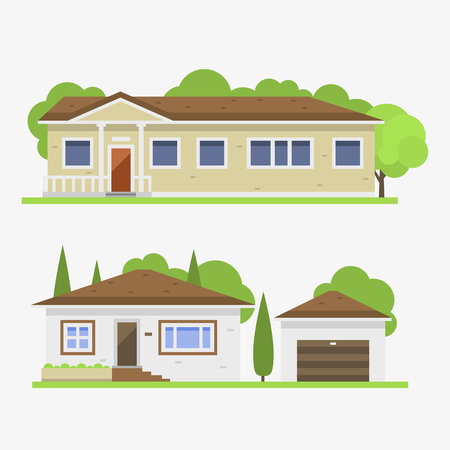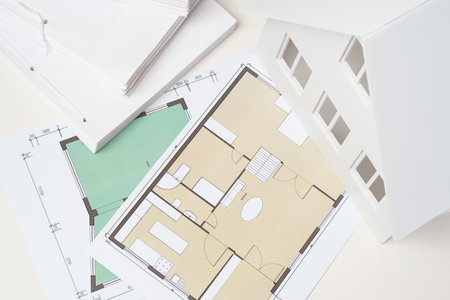Introduction to Loft Conversions in the UK
Loft conversions have become an increasingly popular option for UK homeowners seeking to maximise their property’s potential. In essence, a loft conversion involves transforming an unused attic or loft space into a functional room such as a bedroom, office, or even a bathroom. This type of home improvement project is particularly appealing in areas where property prices are high and space is at a premium, making it an attractive alternative to moving house.
One of the main reasons for the popularity of loft conversions in the UK is their ability to add significant value to a property. According to leading estate agents and property investment analysts, a well-executed loft conversion can increase the value of a typical home by up to 20%. This makes them not only a practical solution for growing families or those in need of extra space, but also a savvy investment decision.
The table below highlights some of the most common reasons why UK homeowners opt for loft conversions and their potential impact on property value:
Reason for Loft Conversion |
Impact on Property Value |
|---|---|
| Additional Bedroom | High – up to 20% increase |
| Home Office Space | Moderate – increased appeal for remote workers |
| Extra Bathroom/Ensuite | Moderate – enhances functionality and desirability |
| Maximising Existing Space | Varies – depends on quality of conversion and local demand |
In summary, loft conversions offer both lifestyle and financial benefits. They cater to modern living needs while often yielding strong returns on investment, especially in competitive UK housing markets.
Types of Loft Conversions
When evaluating the cost of a loft conversion in the UK, its essential to understand the main types available. Each style not only has a unique impact on your homes value and liveability but also plays a pivotal role in your overall budget. The four most common styles are dormer, mansard, hip-to-gable, and roof light (also known as Velux). Heres an overview of each option and how it can influence your investment:
| Type | Description | Typical Cost Range (2024) | Best For |
|---|---|---|---|
| Dormer | Adds a box-shaped extension projecting from the existing roof, offering additional headroom and floor space. | £35,000–£60,000 | Most UK homes, especially terraced and semi-detached properties |
| Mansard | Involves altering the entire slope of one side of the roof to create a near-vertical wall; maximises internal space. | £50,000–£75,000 | Period properties in urban areas seeking significant extra space |
| Hip-to-Gable | Extends the sloping hip roof out to create a vertical gable wall; increases usable loft area. | £45,000–£65,000 | Semi-detached or detached houses with hipped roofs |
| Roof Light (Velux) | Adds skylights into the existing roof without changing its structure significantly; least intrusive. | £25,000–£40,000 | Bungalows or homes with ample existing loft height |
The Impact of Your Choice on Costs
The style you select will be dictated by your property type, planning permissions required, and your intended use for the new space—whether thats an extra bedroom, home office, or rental suite. Dormer conversions remain popular for their balance of cost and added space. Mansard conversions, while pricier, provide maximum headroom and are ideal for high-value urban locations where every square foot counts. Hip-to-gable options suit homes with existing hipped roofs and offer substantial expansion potential. Roof light conversions are the most budget-friendly but deliver less additional space compared to other styles.
Investment Perspective
From an investment analysis standpoint, choosing the right loft conversion style is crucial. Consider not just upfront costs but also potential uplift in property value and future marketability. For example, a mansard conversion in London could yield higher returns due to premium floor space values, whereas a simple roof light conversion may be more suited for cost-conscious investors looking for modest gains without heavy capital outlay.

3. Key Cost Drivers and Typical Price Ranges
When considering a loft conversion in the UK, understanding the principal factors that shape the overall cost is essential for any homeowner or investor. Several variables can significantly influence your project’s final price tag, making it vital to break these down for a clear financial forecast.
Main Factors Influencing Loft Conversion Costs
- Property Location: Labour rates and material costs vary notably across regions. London and the South East typically command higher prices than the North or Midlands due to increased demand and living costs.
- Structural Complexity: The existing roof structure (e.g., truss vs. traditional cut roof), ceiling height, and necessary reinforcements all affect labour intensity and materials needed.
- Type of Conversion: Basic rooflight conversions are more affordable, while dormer, hip-to-gable, or mansard conversions require more extensive work, thus incurring greater expense.
- Planning Permissions and Building Regulations: While many loft conversions fall under permitted development, some may require full planning permission or compliance with stricter building regs—this adds both time and professional fees.
- Finishing and Specification: Choices around insulation, windows, staircase design, ensuite bathrooms, and bespoke finishes will all shift the cost bracket.
Typical Price Brackets by Loft Conversion Type
| Type of Loft Conversion | Typical Price Range (2024) | Description |
|---|---|---|
| Rooflight/Velux Conversion | £20,000 – £30,000 | Adds skylights only; minimal structural change |
| Dormer Conversion | £35,000 – £55,000 | Adds box-shaped extension to create usable space |
| Hip-to-Gable Conversion | £45,000 – £65,000 | Extends sloping side roof outwards; common in semi-detached properties |
| Mansard Conversion | £55,000 – £80,000+ | Dramatically alters roof profile for maximum space; typical in urban settings like London terraces |
The Impact of Regional Differences: North vs South
The disparity between northern and southern property markets is stark. For instance, a standard dormer conversion in Manchester might be achieved for around £38,000–£42,000, whereas in Greater London similar specifications could see quotes exceeding £50,000. This reflects not only higher contractor fees but also premium material sourcing and regulatory hurdles in the capital.
The Importance of Professional Advice
Given these variables—and their potential impact on your investment returns—it’s wise to consult with local architects or specialist builders familiar with both regional pricing trends and planning requirements. Getting multiple detailed quotations is essential to ensure your budget aligns with both your vision and current market realities.
4. What’s Included in the Quotation?
Understanding what is and isn’t included in a typical loft conversion quotation is vital for accurately assessing your investment and avoiding unpleasant surprises down the line. UK homeowners should expect a clear distinction between what’s standard in most quotes and which elements are considered optional extras that may significantly impact your final outlay.
What’s Usually Covered in a Standard Loft Conversion Quote?
| Included Item | Description |
|---|---|
| Structural Work | Reinforcement of floor joists, installation of steel beams if required, and all necessary alterations to existing roof structure |
| Insulation & Plastering | Thermal insulation to meet Building Regulations, plasterboard fitting, and full plaster finish throughout the new space |
| Windows & Rooflights | Standard uPVC or timber-framed Velux windows or dormers as specified in the design |
| Electrics & Plumbing (Basic) | Installation of basic electrical points (sockets, lighting), radiators, and connection to existing systems (if bathroom included) |
| Staircase Installation | Bespoke or standard staircase fitted for access to the new loft room(s) |
| Decorating (Basic) | White emulsion walls and ceilings, primed woodwork; any specialist finishes will likely be extra |
| Project Management & Compliance | Liaison with Building Control, submission of necessary paperwork, and project oversight by the contractor |
Potential Extras That Might Incur Additional Charges
| Optional Extra | Typical Reason for Extra Cost |
|---|---|
| Bespoke Fitted Furniture or Storage Solutions | Custom carpentry such as built-in wardrobes or under-eaves storage is rarely included as standard. |
| En-suite Bathroom Upgrades | Premium fixtures, designer tiles, and luxury fittings are often quoted separately from the base specification. |
| Enhanced Soundproofing/Fire Safety Measures | If your property requires additional sound or fireproofing beyond minimum regulations. |
| Complex Structural Alterations | Significant changes to chimney breasts, rooflines, or load-bearing walls may not be covered in a basic quote. |
| Exterior Works (e.g., Roofing/Rendering) | If your roof needs extensive repairs or re-tiling beyond what’s needed for conversion access. |
| Planning Permission Fees & Architectural Services | If your project falls outside permitted development rights or requires detailed architectural drawings. |
| Premium Finishings & Smart Home Integration | High-end flooring, bespoke joinery, or smart home tech installations typically fall outside a standard package. |
A Note on Regional Variations and Contractor Transparency
The scope of what’s included can vary depending on region—London-based contractors may charge more for even standard works due to higher overheads. Always ensure you receive an itemised written quotation and ask your builder to clarify any grey areas before signing on the dotted line. This level of diligence not only protects your budget but also lays the groundwork for a smooth project delivery aligned with both regulatory expectations and your personal aspirations.
5. Hidden Costs and Budgeting Tips
While the headline figures for a loft conversion in the UK might seem straightforward, homeowners often find themselves caught out by hidden costs that can quickly escalate the overall expenditure. Below, we highlight some of the most commonly overlooked expenses and share practical budgeting tips to help you stay in control of your project finances.
Commonly Overlooked Expenses
| Expense | Description | Typical Cost Range (£) |
|---|---|---|
| Insulation Upgrades | Meeting UK building regulations may require upgrading insulation for thermal efficiency and fire safety. | £500 – £2,000 |
| Professional Fees | Architects, structural engineers, and planning consultants are often essential for design and compliance. | £1,000 – £3,000+ |
| Finishing Touches | Flooring, painting, built-in storage, lighting fixtures, and bespoke carpentry can add up fast. | £1,500 – £4,000+ |
| Building Control & Planning Permissions | Application fees if permissions are required or for obtaining completion certificates. | £200 – £800 |
| Upgrading Electrics & Plumbing | If adding bathrooms or rewiring is needed to meet modern standards. | £500 – £2,500+ |
| Contingency Fund | Unforeseen issues such as damp, asbestos removal, or structural complications. | 10% – 15% of total budget |
Budgeting Tips to Stay on Track
- Get Detailed Quotes: Always request itemised estimates from at least three reputable builders to compare scope and pricing transparently.
- Add a Contingency: Set aside an additional 10–15% of your total budget to cover unexpected expenses—this is standard practice in UK property projects.
- Pace Your Spend: Prioritise essentials first (structural work and regulations), then tackle finishing touches as funds allow.
- Avoid Cutting Corners: Skimping on professional fees or insulation may lead to costly problems later—think long-term value rather than short-term savings.
- Check VAT Inclusions: Confirm if quotes include VAT (currently 20%), as this can significantly affect your bottom line.
- Liaise with Neighbours Early: If your conversion affects shared walls (party walls), factor in potential legal fees for Party Wall Agreements—a unique consideration in many British terraces and semis.
The Bottom Line
A successful loft conversion is all about careful planning and realistic budgeting. By recognising these hidden costs upfront and following disciplined financial practices, you’ll safeguard your investment and add real value to your UK home without nasty surprises along the way.
6. ROI and Market Considerations
When contemplating a loft conversion, it’s essential to analyse its potential return on investment (ROI) in the context of the UK property market. While the upfront cost can be significant, a well-executed loft conversion often adds substantial value to your home—sometimes up to 20%. However, whether your investment pays off depends on several market-driven factors.
Key Factors Influencing Loft Conversion ROI
| Factor | Description | Impact on ROI |
|---|---|---|
| Location | Properties in high-demand areas (London, South East) command higher premiums for extra space. | High |
| Type of Conversion | Dormer and mansard conversions typically add more value than simple rooflight conversions. | Medium-High |
| Quality of Finish | Professional workmanship and modern finishes attract buyers and tenants. | Medium |
| Local Ceiling Price | The maximum price similar homes in your area are selling for can cap your potential uplift. | Critical |
| Market Conditions | Bullish markets favour higher returns; downturns may limit gains. | Variable |
| Usability of Space | A master suite or additional bedroom with en-suite will outperform a generic storage space. | Medium-High |
Potential Value Added vs. Average Costs (2024)
| Loft Conversion Type | Average Cost (£) | Potential Value Added (%) | Typical Value Added (£)* |
|---|---|---|---|
| Rooflight/Velux Conversion | £25,000–£35,000 | 10%–12% | £30,000–£45,000+ |
| Dormer Conversion | £35,000–£55,000 | 15%–20% | £50,000–£70,000+ |
| Mansard Conversion | £50,000–£70,000+ | 20%+ | £65,000–£100,000+ |
*Based on an average UK house price of £300,000. Figures vary by region and property type.
Caveats and Strategic Insights for Homeowners
- Pace Your Investment: Overcapitalising—spending more than you’ll recoup on resale—is a risk in areas with low ceiling prices.
- Liaise with Local Agents: Consult estate agents to gauge realistic value uplift based on recent sales data and buyer demand.
- Bespoke vs. Standard: Custom features may not always translate into higher value; stick to widely desirable layouts and finishes for best results.
A loft conversion can be one of the most lucrative ways to add value and utility to your home in the UK. By aligning your plans with local market realities and focusing on quality execution, you’re more likely to see a strong return when it’s time to sell—or simply enjoy enhanced living space tailored to your needs.


